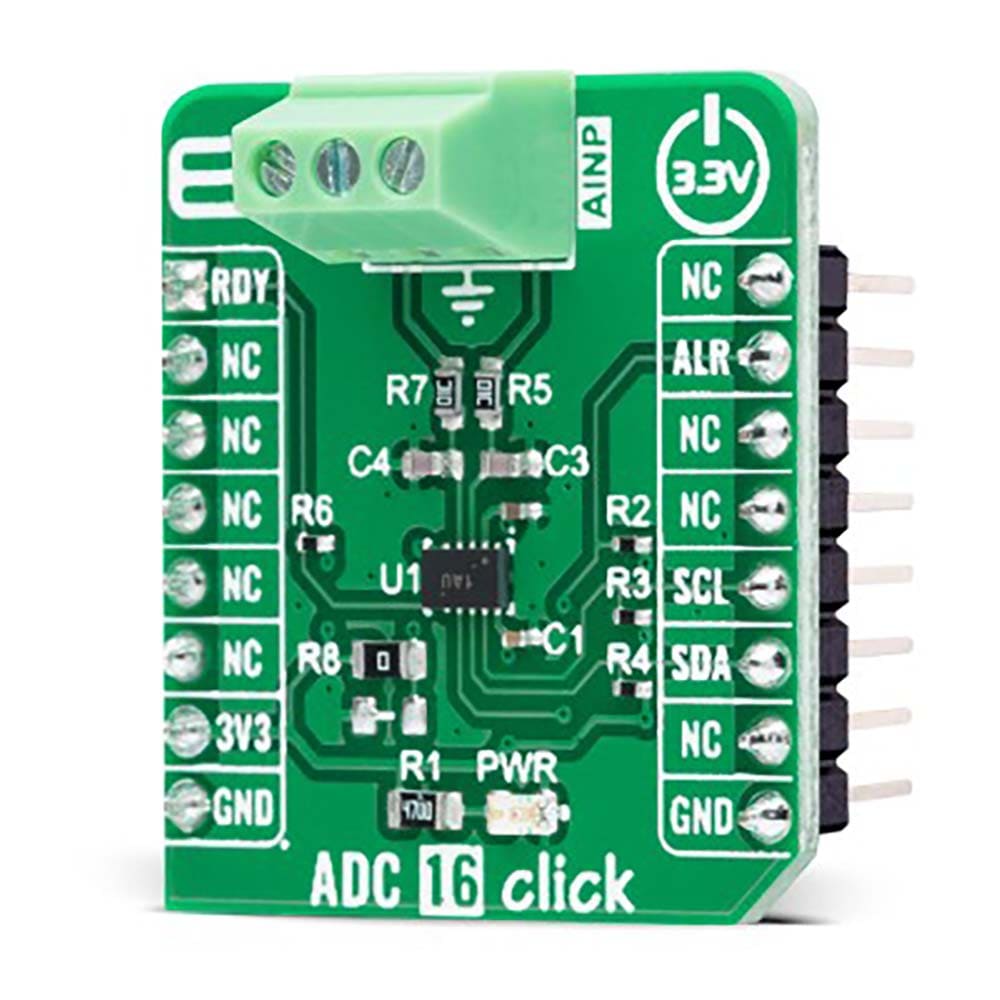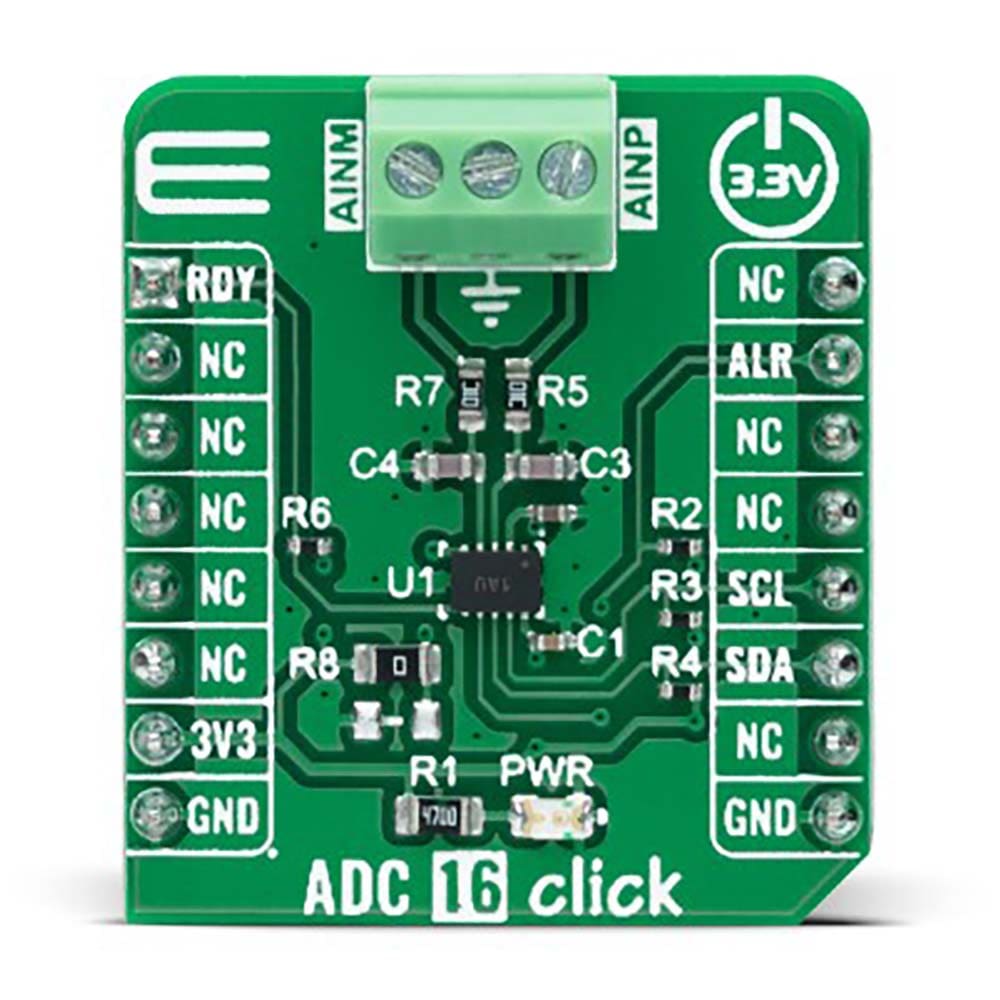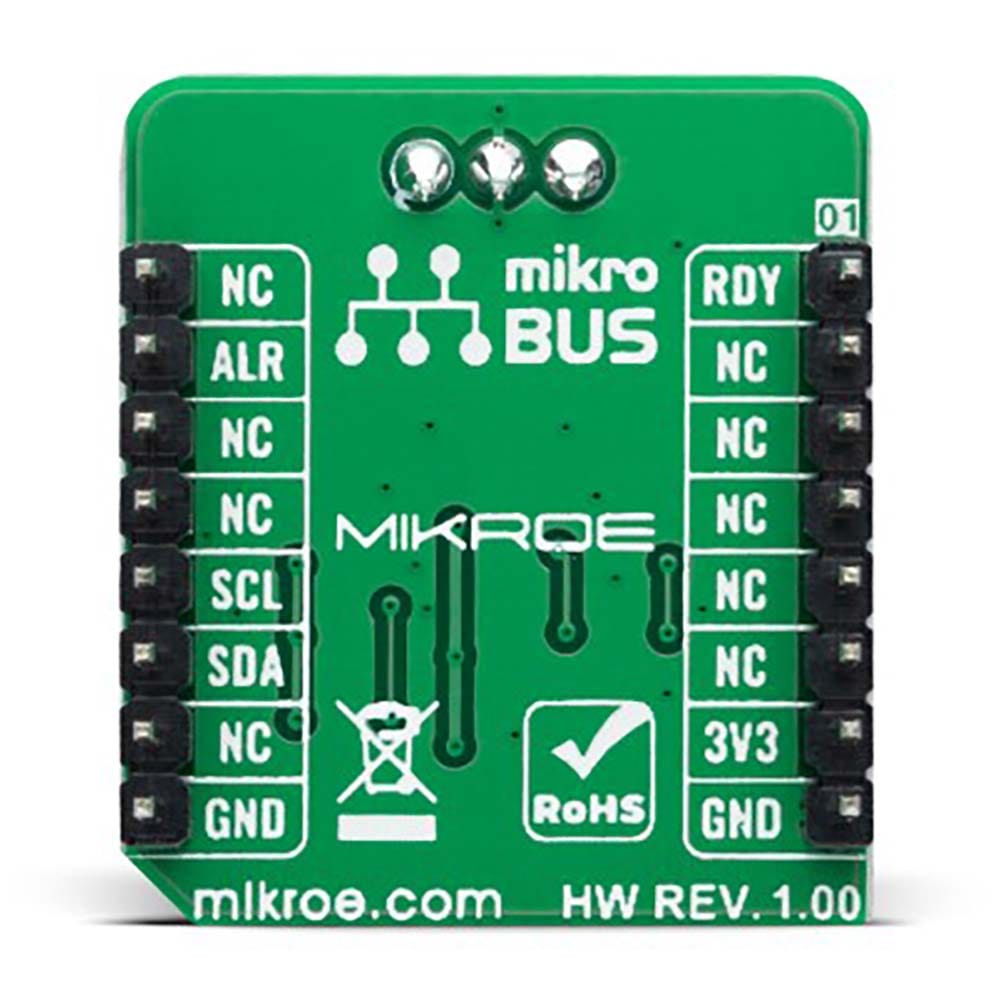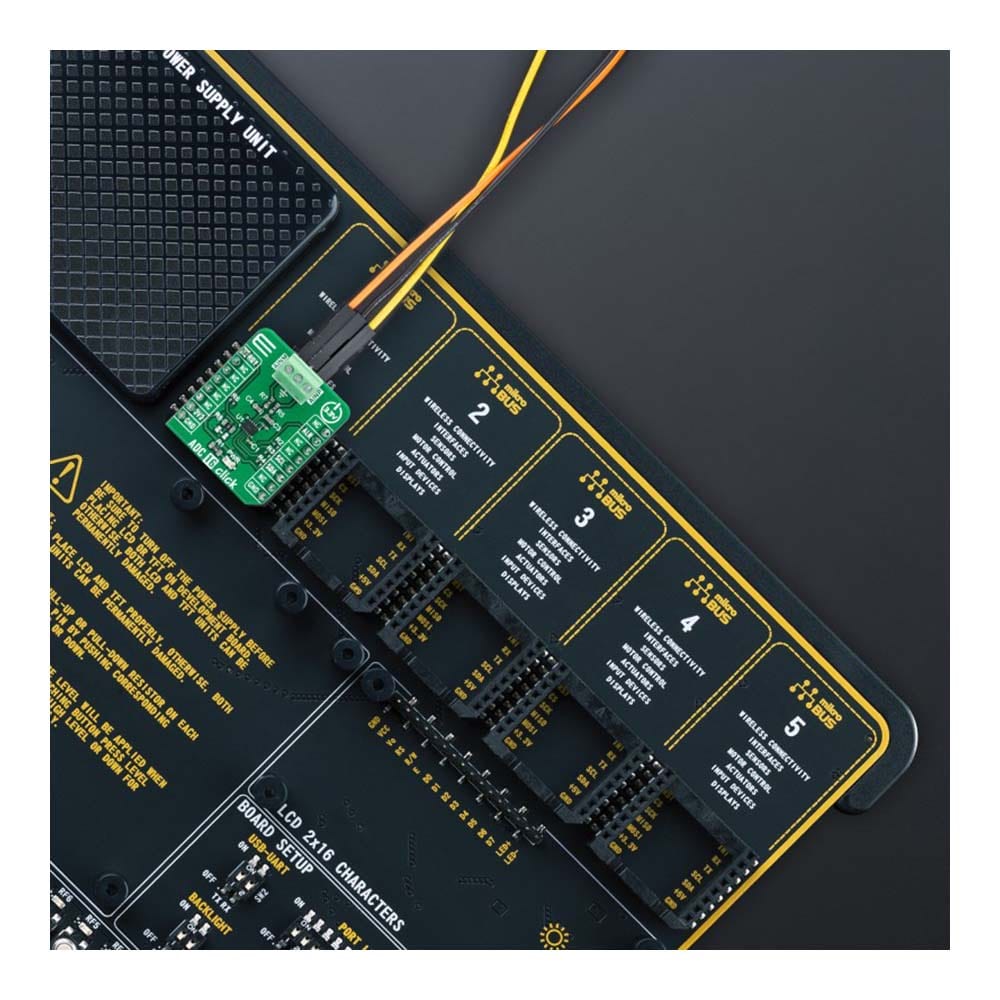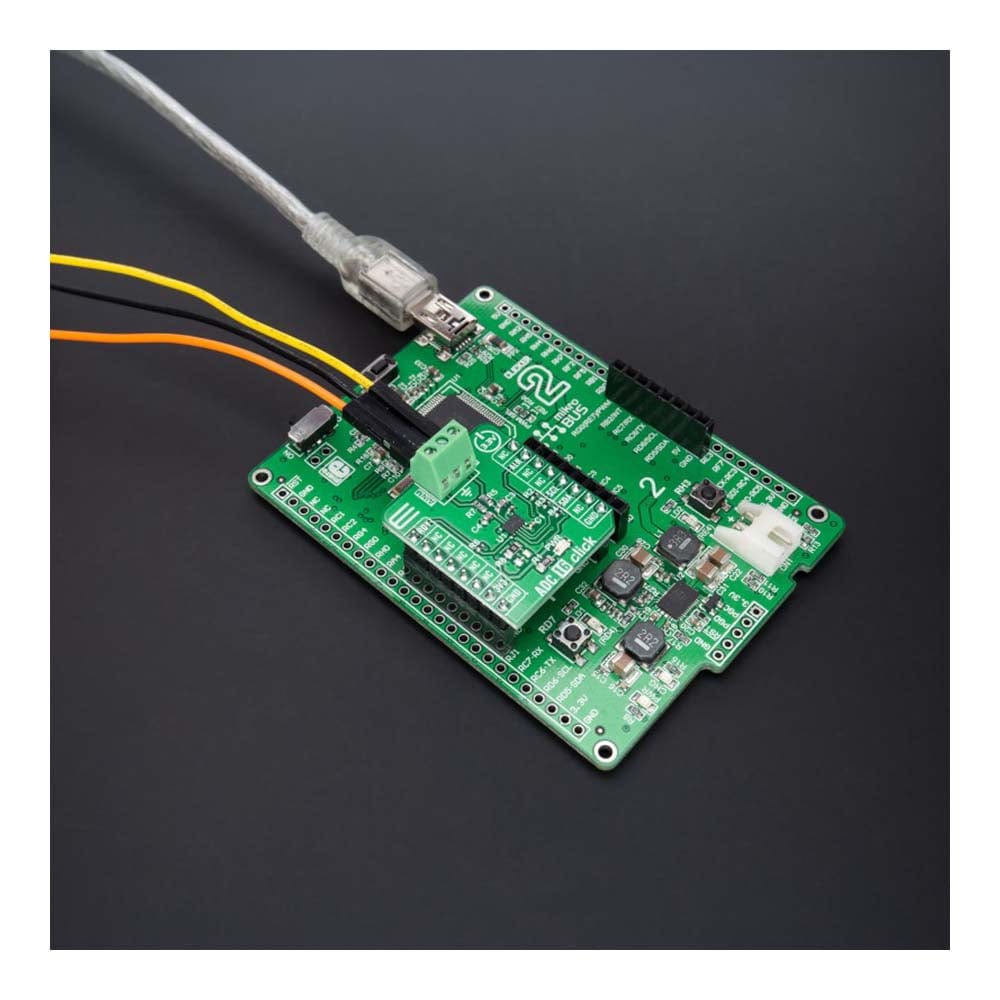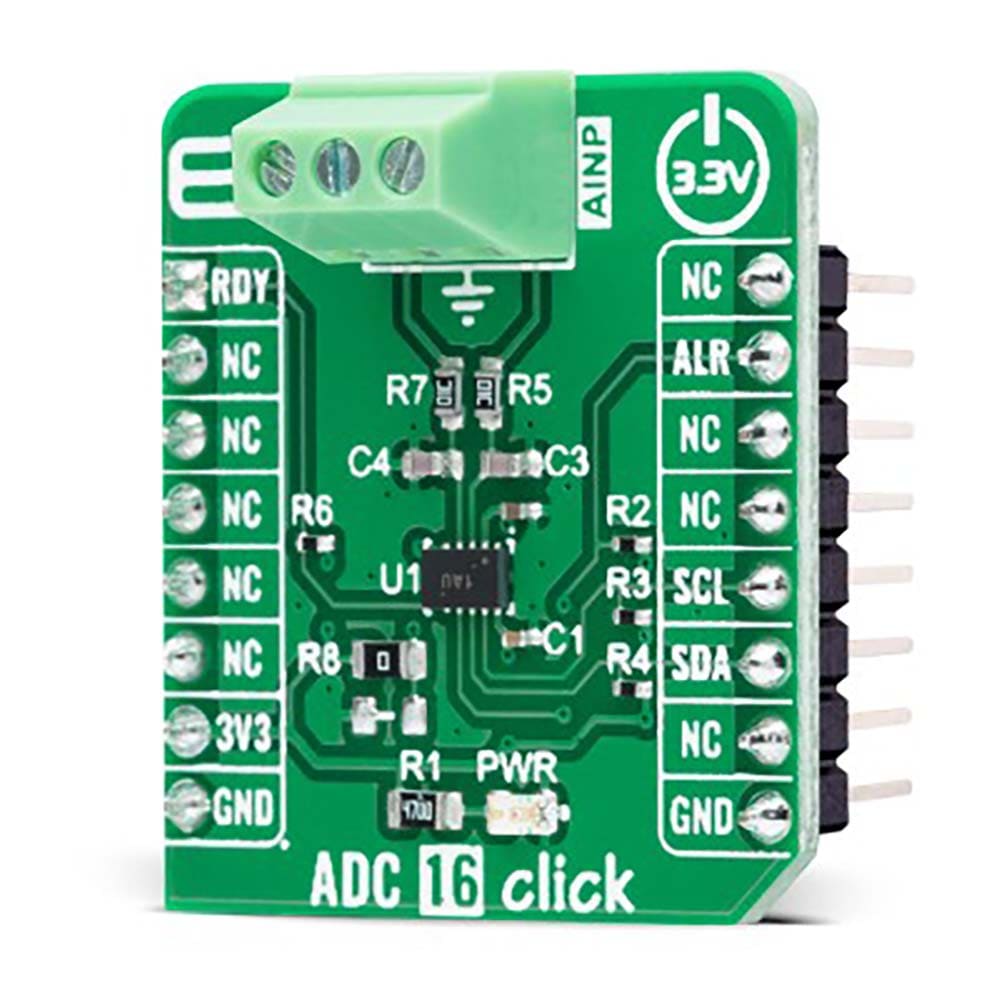
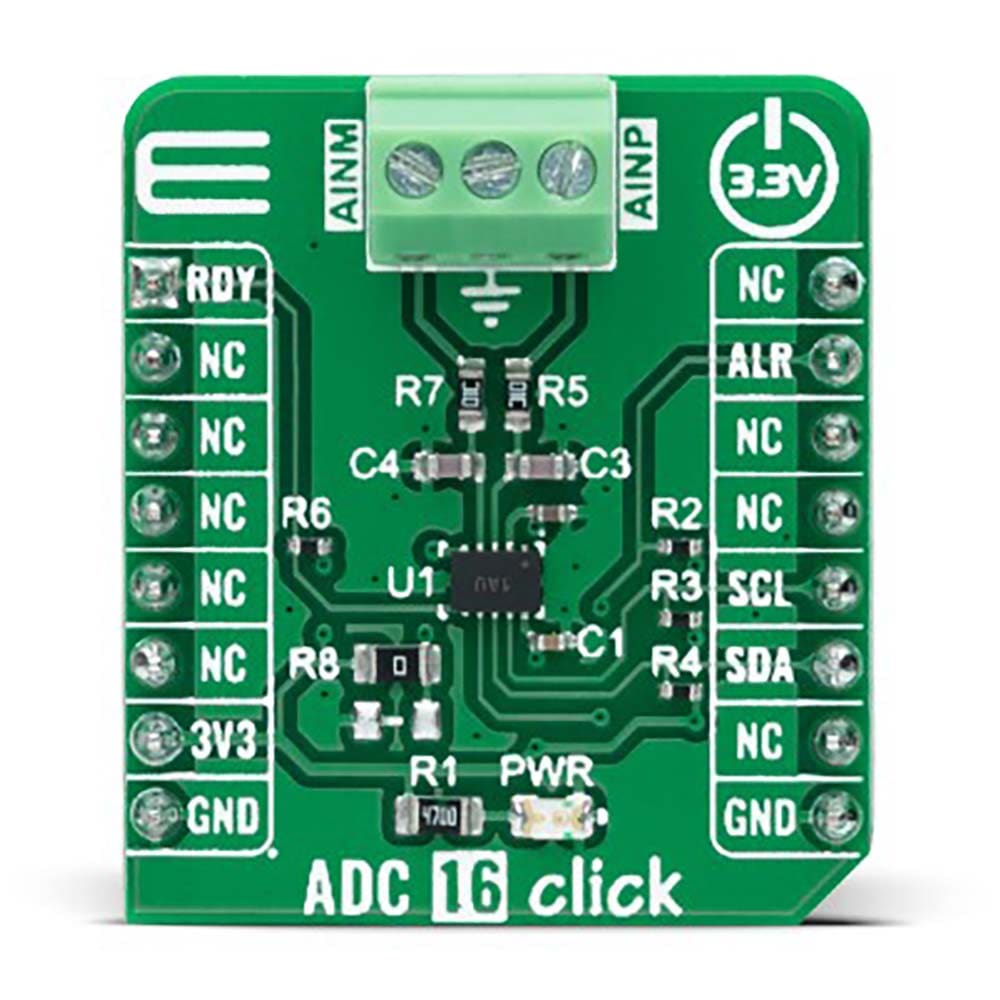
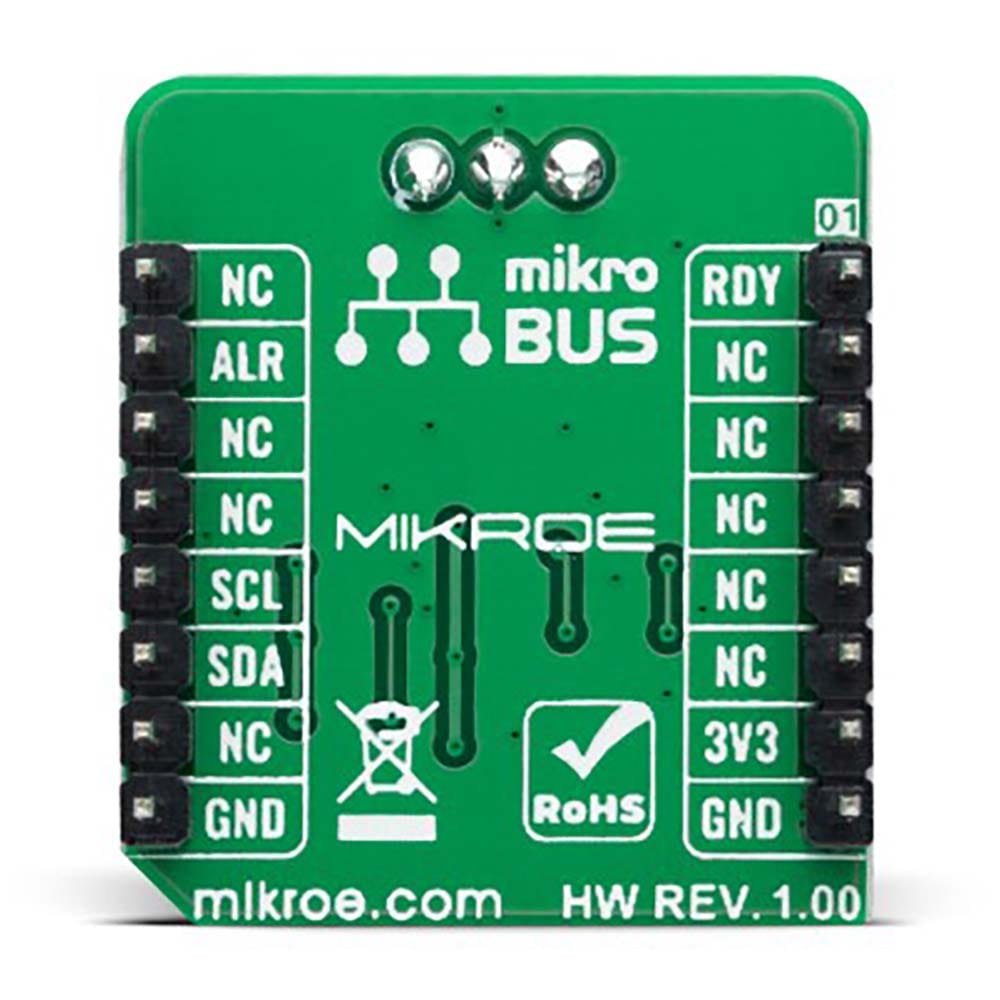
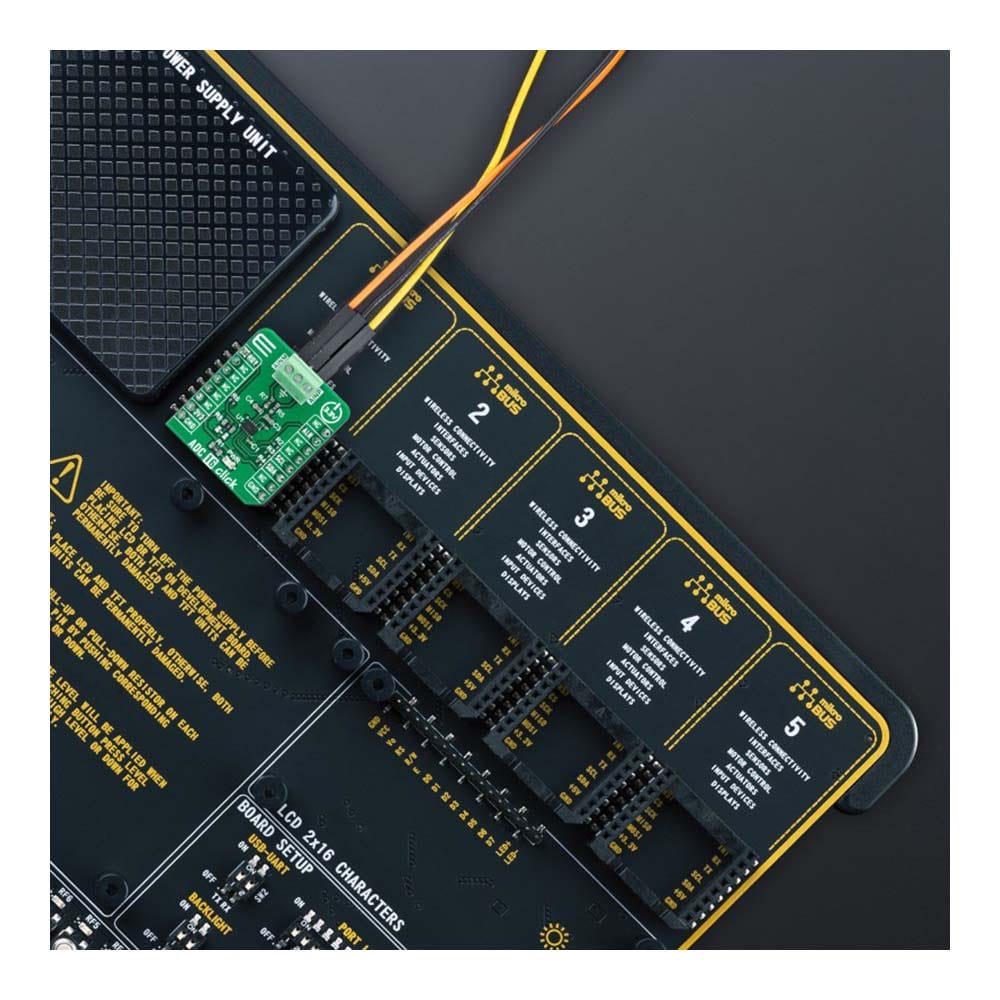
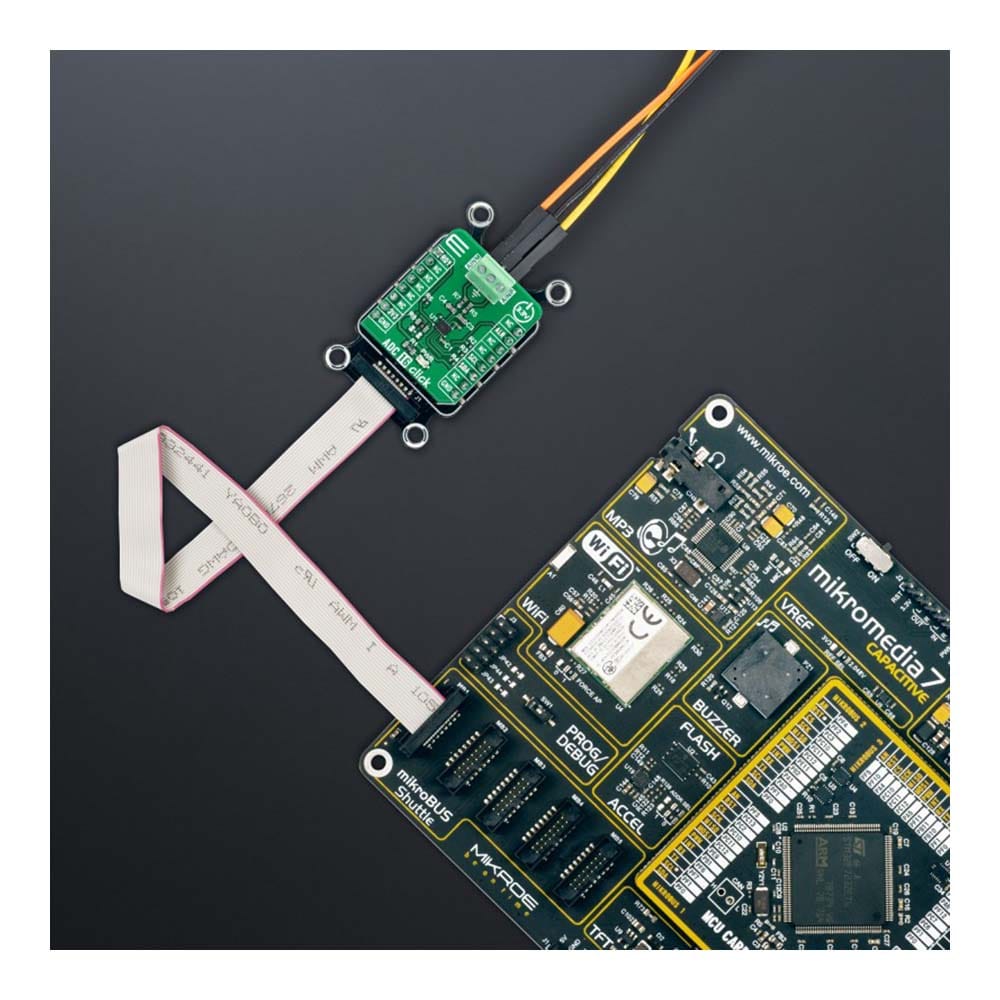
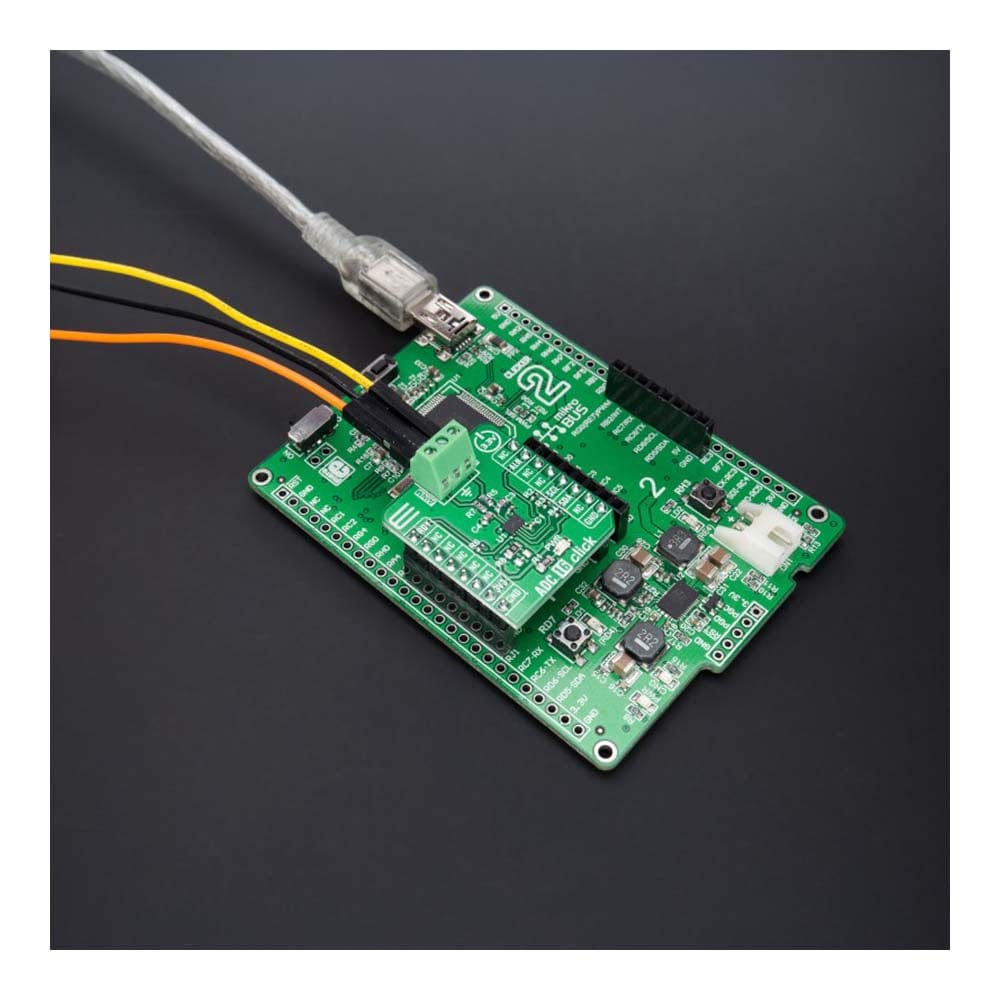
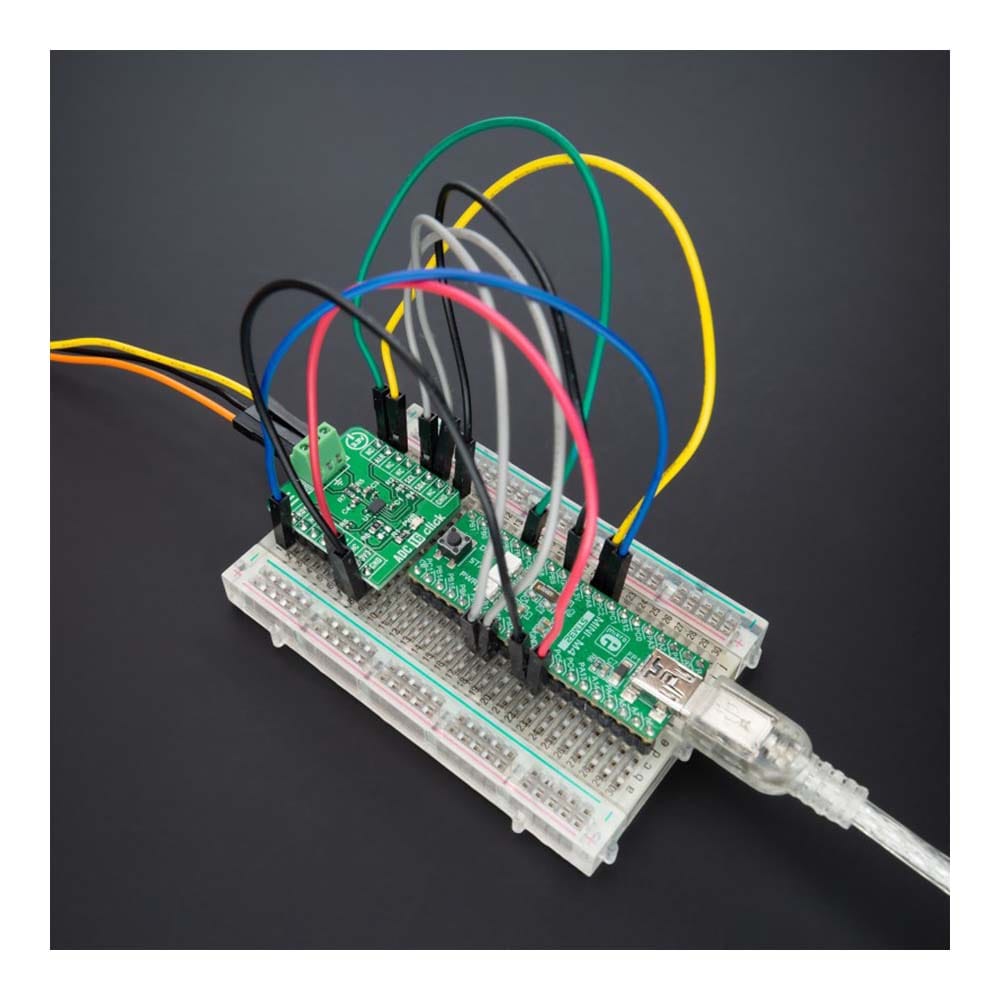
Key Features
Overview
The ADC 16 Click Board™ is a compact add-on board that contains a high-performance data converter. This board features the ADS7142-Q1, a low-power two-channel 12-bit analog-to-digital converter from Texas Instruments. This I2C configurable 140kSPS successive approximation register (SAR) analog-to-digital converter (ADC) can autonomously monitor signals while maximizing system power, reliability, and performance. It implements event-triggered interrupts per channel using a digital window comparator with programmable high and low thresholds, hysteresis, and event counter. This Click board™ offers high accuracy solution for the most demanding applications, from general-purpose monitoring applications (voltage, current, and temperature) to portable consumer electronics and more.
The ADC 16 Click Board™ is supported by a mikroSDK compliant library, which includes functions that simplify software development. This Click board™ comes as a fully tested product, ready to be used on a system equipped with the mikroBUS™ socket.
Downloads
L' ADC 16 Click Board™ est une carte complémentaire compacte qui contient un convertisseur de données hautes performances. Cette carte comprend l'ADS7142-Q1, un convertisseur analogique-numérique 12 bits à deux canaux à faible consommation de Texas Instruments. Ce convertisseur analogique-numérique (CAN) à registre d'approximation successive (SAR) configurable I2C de 140 000 SPS peut surveiller de manière autonome les signaux tout en maximisant la puissance, la fiabilité et les performances du système. Il implémente des interruptions déclenchées par des événements par canal à l'aide d'un comparateur de fenêtre numérique avec des seuils haut et bas programmables, une hystérésis et un compteur d'événements. Cette carte Click™ offre une solution de haute précision pour les applications les plus exigeantes, des applications de surveillance à usage général (tension, courant et température) aux appareils électroniques grand public portables et plus encore.
La carte Click Board™ ADC 16 est prise en charge par une bibliothèque compatible mikroSDK, qui comprend des fonctions qui simplifient le développement logiciel. Cette carte Click Board™ est un produit entièrement testé, prêt à être utilisé sur un système équipé du socket mikroBUS™.
| General Information | |
|---|---|
Part Number (SKU) |
MIKROE-4937
|
Manufacturer |
|
| Physical and Mechanical | |
Weight |
0.02 kg
|
| Other | |
Country of Origin |
|
HS Code Customs Tariff code
|
|
EAN |
8606027389375
|
Warranty |
|
Frequently Asked Questions
Have a Question?
Be the first to ask a question about this.

